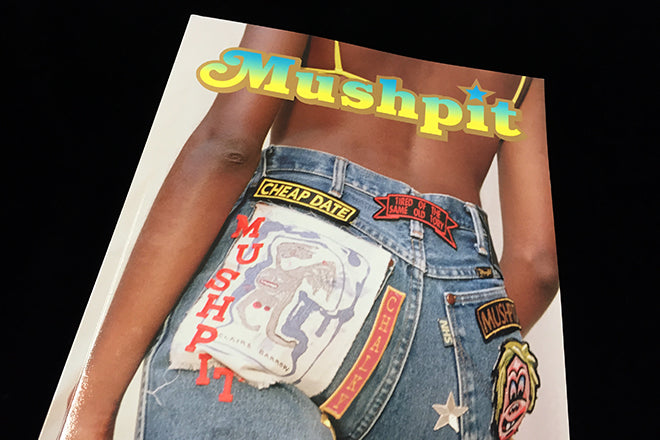
Mushpit #7
Mushpit is a London-based magazine put together by what I imagine are two best friends who have a similar passion for clashing colours, iron-on patches, fizzy drinks and hilarious counterfeit clothes. Former Vice Fashion Editor Bertie Brandes and stylist Charlotte Roberts founded the magazine in 2011, and since then it’s been described as ‘J-17 meets Private Eye’, which actually sums up the publication very well. It’s confident, satirical, silly and also fiercely political in places, with lots of clip-art typography, girls dressed in prom dresses and sassy advice columns bursting from the shiny, colour-saturated pages.
Most of the content is a parody of what you’d find in mainstream publications, but it’s also a re-imagining of what was so great about teen magazines, only less patronising and with a lot more punch. Here’s a round-up of some of my favourite spreads in the recent ‘Sell Out’ issue:

What looks like a poorly designed ad is actually a protest against London’s influx of luxury developments that are blighting the skyline (above).

‘The Mushpit Guide to Dating in Your Twenties’ is written like an email from a close friend (above). The use of a sexline ad aesthetic is a typical visual reference.

A flow-chart establishes how much your social media is worth (I got the meagre ‘£25’) (above).

An interview with the editor of 90s style magazine Cheap Date is both chatty and intriguing (above).

A spread of expensive handbags in unglamorous places, labelled with an ungraceful comic sans, is hilariously down-to-earth (above). Another shrewd-eyed shoot brings together different outfits inspired by nans (below).


Most of the advice sections are bordered by a dotted line, perfect for cutting out and keeping in your wallet (above).
Sometimes Mushpit looks a bit like Mean Girls’ ‘Burn Book’ crossed with a copy of Tatler and a pack of bubble gum. It’s filled with fashion inspired by old copies of i-D and deft charity shop finds, and it’s tied together with a deliberately OTT and messy aesthetic that some might find too much. The magazine captures a particular mood and moment specific to London, and it’s a young, much-needed satirical voice that extends beyond the fashion industry into other realms as well.


